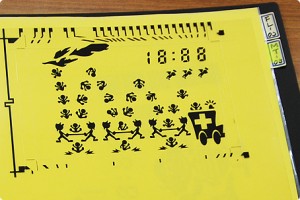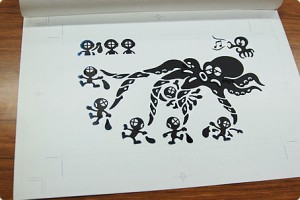
Dear Reader:
Iwata Asks: Game & Watch - Humble calculator beginnings, light-up test systems, production schedule, worldwide sales, birth of the dpad
Iwata: A strange fate drew you, my predecessors, toward making Game & Watch.
By the way, I heard that (Gunpei) Yokoi-san hit on the idea for Game & Watch when he saw someone playing with a calculator on the Shinkansen. What did he say to you when development of Game & Watch began?
Kano: Unfortunately, I don’t know much about that. I didn’t get called from the Creative Section to Research & Development 1 and begin working on Game & Watch until the first title, Game & Watch: Ball, was already underway. At that point, Yokoi-san and (Satoru) Okada-san were already making the prototype.
Iwata: You came in partway through, so you don’t know what happened at the start. Kano: No. But I do think it’s true that Yokoi-san was inspired by calculators.
Izushi: The chip used in Game & Watch was the same as in calculators. A single number on a calculator display is composed of seven segments, so…
Iwata: I heard that the test models were bigger than the actual systems and had lights. What was one like?
Yamamoto: First, we took the materials that Kano-san had drawn up and put them on film in a darkroom.
Iwata: In a darkroom? (laughs)
Yamamoto: Yes. We made a reverse image of the original.
Izushi: Then we used a jigsaw to cut acrylic plastic that was about five millimeters thick to match the pattern on the film and placed it onto a circuit board perfectly matching it in size.
Yamamoto: Then we lined up grain of wheat bulbs at holes we had cut out.
Iwata: Grain of wheat bulbs like used for plastic models? It truly is like craftwork!
Yamamoto: It really was. And we had to be careful the light didn’t bleed where it shouldn’t.
Kano: We applied smoked acrylic so you could only see the graphics where the lamps were.
Izushi: Rather than making software, most of the time it was like we were doing craftwork—cutting, gluing, and making holes.
Iwata: You were like a bunch of mechanically-minded boys who got together to make big a Game & Watch system. How big were they?
Kano: About the same size as the original art we just saw, so about the size of an A4 piece of paper.
Iwata: You made sure the game was fun by using big Game & Watch test models the size of an A4 piece of paper.
Yamamoto: We’d run one and say, “We should change this a bit here,” and “Let’s make it easier to see here.”
Kano: It was important that the movement look natural. If it didn’t look right on the test model…
Iwata: So you didn’t just make the test model once?
Izushi: No. And Yokoi-san would check it. We talked about the “Yokoi standard” back then. We could hardly get anything past him.
Iwata: How many months did it take you to make one title?
Kano: There were times when we made one per month.
Izushi: Yamamoto-san and I would take turns developing the software, so we could put out one product a month.
Iwata: That’s incredible. Today’s games are much more complicated, but we can punch a few buttons on the keyboard and try it out right away. It was different for the Game & Watch system. You’d have to go back to the darkroom and reassemble everything, so it must have been really hard. How did you handle the programming?
Iwata: I had some numbers looked up in preparation for today. The Game & Watch series sold 12.87 million domestically and 30.53 million overseas for a total of 43.4 million.
Iwata: One year before the NES went on sale, Game & Watch: Donkey Kong was the first game to use the D-pad.
Izushi: Yes.
Yamamoto: We tried out all kinds of things for the D-pad. We would have Yokoi-san try prototypes that the hardware team had worked their hardest on and ask, “How is it?” and he’d say, “No, it’s not right,” and then we’d begin the whole process over again.
Izushi: We sure did make a lot of those. Yokoi-san was really particular that players be able to operate it without looking at their hands, so we did things like make a depression in the center.
Iwata: Ah, I see. But it’s such an important element that you could say his dedication contributed significantly to today’s video game culture. Donkey Kong also had dual screens.





